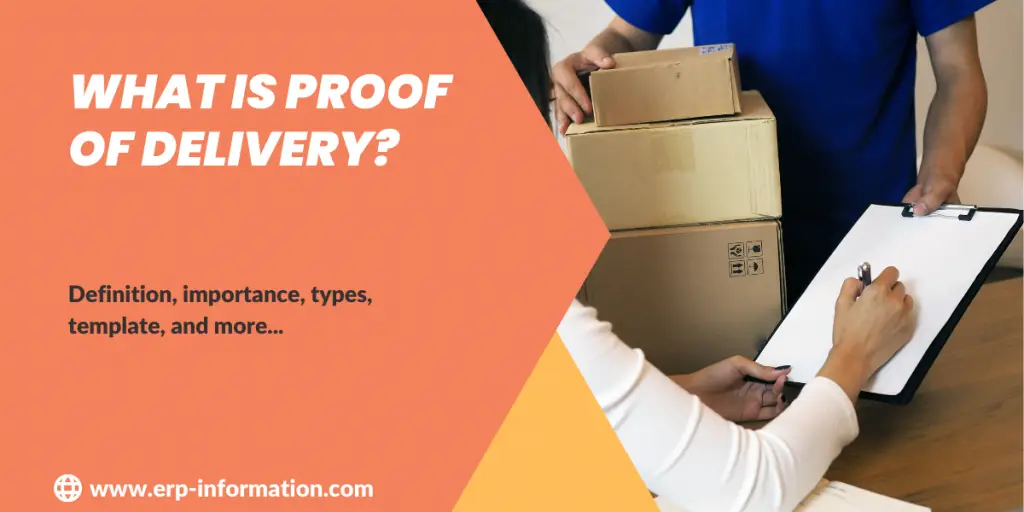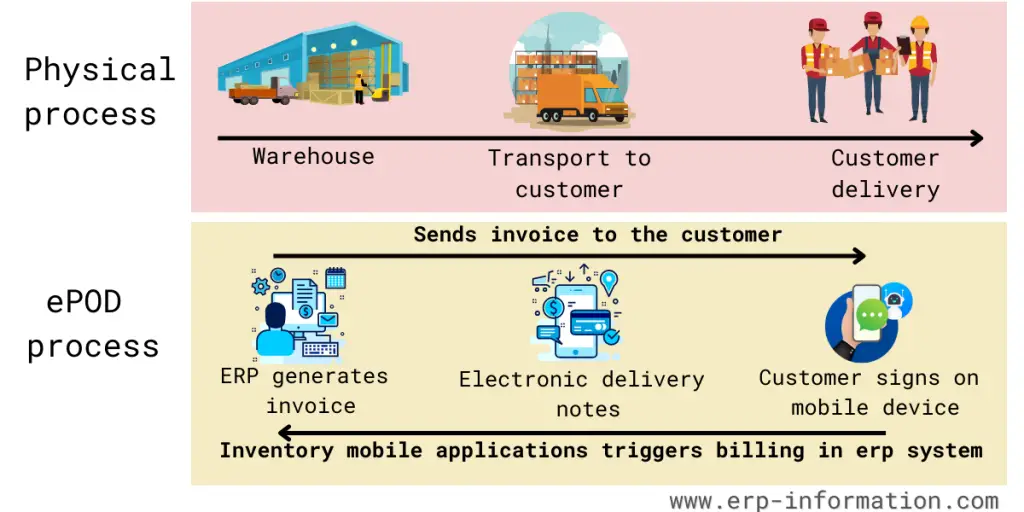Proof of delivery (POD) is a crucial, yet often overlooked, step in the logistics and supply chain industries. It helps ensure the proper delivery of goods and services, providing customers and vendors with peace of mind that each delivery is accurate and accounted for.
In addition, POD allows organizations to track shipments, improve customer service and delivery performance, and streamline operations.
As more businesses become aware of the value of proof of delivery, they increasingly turn to digital solutions that automate the process to reduce costs and maximize efficiency.
This post will discuss the proof of delivery, its importance, its types, and its template.
What is proof of delivery?
It is a way to confirm that the intended recipient has received the goods. It usually involves a signature or photo of the item as evidence that delivery has occurred.
It can also provide businesses with feedback from customers, such as whether they are satisfied with the purchase or found any issues with it.
By using proof of delivery, companies can ensure accuracy and accountability in their deliveries while simultaneously providing customer satisfaction that their orders were fulfilled correctly.
Importance
POD is essential to the logistics and supply chain industries. It allows businesses to track shipments, improve customer service, and streamline operations, ensuring goods are delivered accurately and on time.
With proof of delivery, businesses can also avoid costly disputes and lost shipments by providing customers with evidence that their orders have been received.
Additionally, it can help identify potential problems or fraud cases that might occur during transit. For these reasons, many companies are now turning to digital solutions to provide automated proof of delivery and reduce costs while maximizing efficiency.
Types of proof of delivery
We can bifurcate POD in two ways. One is paper, and another is electronic.
Paper POD is a physical acknowledgment from the customer when he receives a product or service.
Electronic POD is a digital technology for acknowledgment, such as barcodes, QR codes, and GPS tracking, used by courier companies and postal services like FedEx.
The popularity of ePOD over traditional POD
Electronic POD (ePOD) is becoming increasingly popular in the logistics industry due to its many advantages over traditional paper-based proof of delivery systems.
ePODs are more cost-efficient, reliable, and convenient than paper-based systems as they can be accessed quickly and accurately without manual intervention.
Additionally, with barcodes and QR codes, ePODs offer much greater visibility into the location of goods during transit and give businesses greater control over deliveries, allowing them to monitor shipments in real-time and respond quickly to any issues that arise during transit.
Proof of delivery template
The POD template contains the following information.
Name and address of the Seller
It indicates from where the order has come. It contains information like company name, address, telephone number, and email ID. It helps customers to get in touch with the seller in case of any problem with the order.
Order number and date
It is the reference number of the order. It helps both the seller and the customer to identify the order.
Shipping information
It indicates the “shipping to address.” It helps to solve delivery problems like the wrong address.
Billing information
It indicates the total amount paid or the amount to be paid. It also represents proof of payment for the ordered item.
Order details
These contain information like the ordered item description, order quantity, delivered quantity, and price for each item.
Date and time of delivery
It confirms the order delivery. If it is a paper document delivery person will fill in the data and time while getting the acknowledged signature from the receiver. The software automatically records the delivery time and date if it is an electronic delivery receipt.
Recipient’s signature
It may be a manual signature on the receipt, an e-signature, or an uploaded photo showing the delivery boy delivered the order to the right person.
Benefits of proof of delivery for customers
The POD process offers numerous benefits for customers, including
Increased trust and assurance in the delivery process
Customers will have confidence knowing that their package has been safely delivered to its destination with documentation to prove it.
Improved customer service
With access to real-time tracking data, customers can track their orders easily and receive updates along the way.
Reduced costs
With automated POD processes, businesses can save time and money by avoiding manual paperwork.
Enhanced security
Companies can reduce their risk of fraud or errors by providing an irrefutable record of a customer’s order delivery.
Improved visibility into shipping status
With detailed information about the status of shipments at any given time, customers can make more informed decisions about when to expect their orders to arrive.
Benefits of proof of delivery for sellers
Reduced shipping costs
Automating the POD process helps businesses save time and money on paperwork, reducing the overall cost of shipments.
Improved customer service
With access to real-time tracking data, customers can track their orders easily and receive updates along the way.
Enhanced security
The POD process provides an irrefutable record of a seller’s order delivery, protecting them from potential fraud or errors.
Increased efficiency in the supply chain
By providing visibility into the status of each shipment at any given time, sellers can better plan and optimize their shipping operations.
Streamlined invoicing and billing processes
Automated POD processes eliminate manual paperwork associated with these tasks, saving businesses time and money with automated invoicing and billing processes.
Popular POD vendors
- Track-POD
- OptimoRoute
- Onfleet
- Routific
- Route4Me
- eLogii
- Circuit
- Tookan
- Shipsy
- GSM Tasks
- Locate2u
FAQs
Is proof of delivery is same as a bill of lading?
No, proof of delivery is not the same as a bill of lading. A bill of lading is a document to be signed by both the shipper and the carrier, while proof of delivery is a document that the carrier can only produce.
In addition, the bill of lading serves as evidence of the goods being accepted by the carrier. At the same time, a proof of delivery is a document used to prove that goods have been delivered to their intended destination.
What is a bill of lading?
The bill of lading is a crucial document in international shipping, as it is a contract between the shipper and the carrier. It provides evidence that goods have been received by the carrier, who will be responsible for delivering them to the designated destination. The bill of lading also acts as an invoice to the receiver, showing how much they owe for the shipment.
What is the importance of a bill of lading?
With the help of a bill of lading, both parties can ensure accuracy and trust in the transaction. The bill of lading also protects all parties involved from misunderstandings arising from inadequate or incomplete descriptions of goods, misreading of data on labels, or other errors. Providing an accurate record of the shipment’s contents, weight, volume, and value ensures that everything has been included and correctly represented.
Conclusion
Proof of delivery is an important document used to validate the delivery of goods. It helps to ensure efficient and accurate handling and delivery of goods.
In addition, it enhances the delivery performance of the business. The post discussed proof of delivery, including importance, types, and template.

